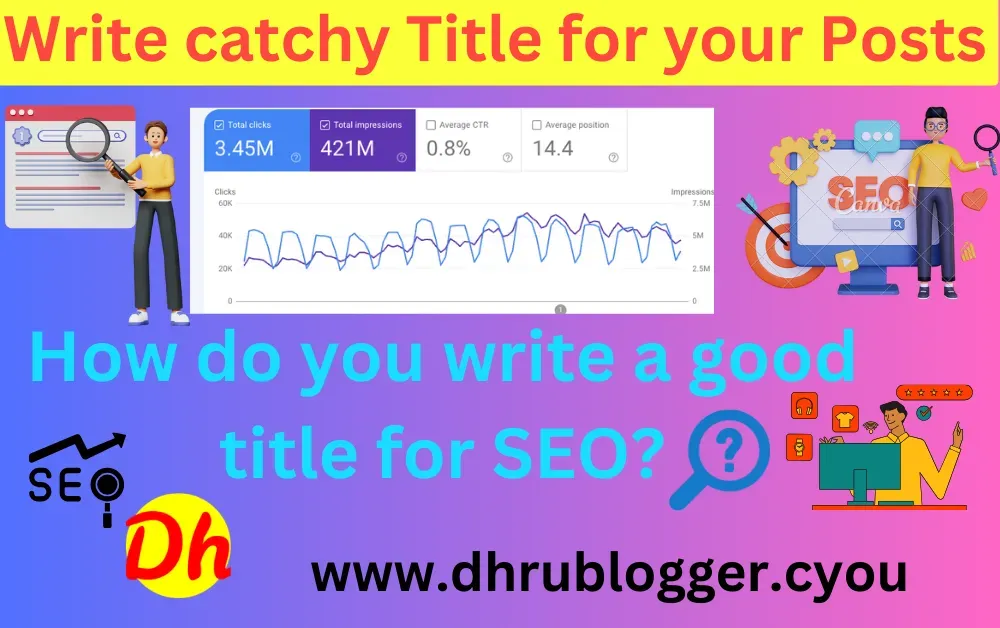Hello, dear bloggers, hope you all are fit and fine and doing well. Because, in this article, we are going to discuss about how you can write an article that is SEO (Search Engine Optimized) article in 2023.
To write an article, you need to at first know that basics of what is SEO, how you can do SEO for your website and what makes your article rank in Google Search.
{tocify} $title={Table of Contents}
What is SEO and how it works?
SEO is the process that is used to optimize a website's technical configuration, content relevance and link popularity so that people can see the questions as well as answers to their own query. This happens so that a website's pages can become easily findable, more relevant and popular towards user search queries.
Search engines like Google, Yahoo, Bing, Baidu, Duck Duck Go rank these websites according to the topic the websites are most popular in.
SEO is very important for websites, let it be a blog website or, a tool website or, a news website because, SEO is a digital marketing strategy aimed at improving organic (non-paid) search traffic to your website.
SEO is about making your content relevant to the keywords and phrases that your target audience uses when searching for information or products online. It's not just about ranking higher but it is about connecting your content to what your audience is looking for.
Quality content is at the heart of SEO:
Google and other search engines prioritize high-quality, informative, and well-structured content. This means your articles should be well-written, free of errors, and provide real value to your readers.
Even if you write quality content, your website may not get recognized by the search engines. A lot of factors work behind it but the main problem of your articles not ranking in Search engines is because, your domain has either been newly created or your article is is not informative to the audience.
Why is crawling important in SEO?
Search engines will crawl your website in order to discover which keywords you are using or, which topic should be perfect for ranking your website in. In other words, crawling is when search engines access, discover, and scan pages around your web page or site.
Crawlers of the search engines will crawl almost every pages of your site to see what changes you have made within your website. You can restrict crawlers from crawling specific pages of your website using robots.txt file.
You can also use robots noodp in your html of the site to make sure it doesn't crawl or index your site. But since we are talking about ranking, it is important that those tags are removed.
Furthermore, we would recommend you to use the following tags in your html design. You can pase this code inside your <head> tag or, in between the <head></head> tags: "<meta content='index, follow' name='robots'/>"
Keyword research and title creation
How can I research keywords fast?
There are a lot of websites that offer you to research about your keyword for free. Even Google has Google Keyword planner for keyword research which is one of the best tools anyone can use for Keyword research purposes.
If you want to get leads on Google search, then you need to research about your topic and for that, you can use Semrush, Wordstream, Neil Patels Keyword research tool, The Hoth etc.
All of these keyword research tools are amazing and gives almost exactly the same results for the search is that have been made for the last couple of months or, an average of the searches from the last 12 months.
You can use long tail keywords as they have the chance to get ranked easily on Google search. Long tail keywords, specially keywords with "How to" topic tend to have more clicks than normal keywords.
If you use the results from these keywords research tools as your Blog Topic or niche, you can rank according to the difficulty as well as competition on the particular niche. This is how you can research keywords fast.
How do you write a good title for SEO?
To start writing a good SEO title for your blog post, you need to at first research about your keywords and find the topic which best suits your website.
Then, you need to add attention grabbing words to your keywords so that people would click on your article to see what is up with it. If they find your article helpful, they will obviously start recommending their friends or whoever is facing the same problem as them.
For writing a Title which is SEO friendly, you can use different kinds of headline analyzer. Some of the best headline analyzers that give you results according to the keywords as well as give recommended words to help you make a good title are: Ai Seo, Monster Insights, Coschedule etc.
For making SEO friendly titles for your articles, you can use some power words, emotional words and common words and make sure that the viewers understand what you are trying to give them or, what is your article really about.
Try to refrain from making catfish titles as no one likes to get scammed. Your articles might not rank and might have the chance to get deranked from Google Search.
How to create high quality content in 2023?
High quality content means the content that users are interested in or, tend to stay more than other websites. They stay because, they get close to the answer thay are searching for.
Choose the right headings for writing an article:
Right headlines or headings help users to know in which paragraph or part their main content is hidden. The right headings can make your article more engaging, improve its search engine optimization (SEO), and help readers navigate your content more effectively.
Your headings should be clear and directly related to the content they or your audience want or are looking. Readers should be able to grasp the main topic or point of a section by reading the heading alone and this does not only apply for headings, but also for your title.
Keep your headings short but understandable. A good heading should be short and to the point. Lengthy headings can be confusing and your precious audience might not want to read the rest of your content if it is misleading.
Use a logical and hierarchical structure for your headings. Typically, articles start with an H1 (main title), followed by H2, H3, and so on for subsections or sub headings. This structure helps your article and makes it look more organized and visually represents the article's flow.
Depending on the article's length and complexity, consider using subheadings to further break down sections. Subheadings make it easier for readers to find the specific information they are looking for.
Write unique and engaging articles:
Try to write articles that your visitors might be interested in. Because, on almost all the topics on the internet has its answers and if your answers are not more unique or, engaging in any way than the ones that are already ranked, then your article will never rank in Google Search even if you do the right SEO for your articles.
Use Table of content (TOC) in long articles
Table of content, also known as breaker of content is very helpful since it summarizes everything your article is providing to your audience. They can see that table of content and get an idea of what information you are providing them.
That is why, a good and short heading as well as subheadings are important. Because, a table of content in blog articles specially shows the headings and sub headings. Users can click on the headings or subheadings to directly go to the part of the article they are most interested in.
But you don't have to use Table of content in each and every article or post of your blog. It is recommend for you to only use Table of content if your article is greater than 600 words and has a lot of headings. Unnecessary TOC can make your blog post or article look bad in structure.
Image and Multimedia Optimization: Why is image optimization important for websites?
Image optimization is very important when you start a post or a blog article since Google also ranks images according to the 'Alt Text' or alternative text you put in the html format of your image.
Optimized images lead to a smoother and more pleasant browsing experience for your visitors. When web pages load quickly, users are more likely to stay engaged, navigate through your site, and ultimately convert into a loyal visitor for your blog.
For that to happen, your images must be unique as unique images that they won't find anywhere are more attention grabbing than the images generally found on the internet. Again, if you have images that are subjected to a copyright strike, your article might get removed from Google search, hampering your Domain authority.
You can optimize the images from your blog in many ways. At first, try to use compressed or, images that take less time to load in your blog posts. You can use webp images in your posts to make sure the image quality remains the same and takes less storage and loads fast.
We have already published a tool that can convert your png images into webp format so that you can have high quality images with less storage. You can check and use it in order to optimize images from your blog posts.
Check out our Png to Webp free image converter tool for making sure your images loads fast.
The other things you can do to optimize your images is add the "loading='lazy'" tag for lazy loading your image. Also, don't forget to add alt text in your images to make sure it ranks in the image section of your desired keyword in Search engines.
Internal Linking for SEO: Is internal linking necessary for on-page SEO?
Internal links are the backbone of your website's architecture. They are the hyperlinks that connect one page on your website to another. While external links connect your site to the wider internet, internal links form connection between pages of your website. These links play a vital role in guiding both users and search engines through your content.
Internal links make navigation easier for your site visitors. When readers find relevant links to explore, they are more likely to stay longer on your site, reducing bounce rates and improving user satisfaction.
Search engines like Google use crawlers to navigate and index websites. Internal links provide clear pathways for these crawlers, allowing them to discover and index your content more efficiently.
But even if it is good for your site, it is recommended not to link too many pages of your site in one post since it can backfire on the structure of your article. Try to backlink related posts of your site only.
Aside from internal linking, you might want to give backlinks to web pages that are already ranked in your main niche. You don't need to always do that because it is not absolutely necessary. But, for the better understanding of your viewers, you can link other sites.
These were the main points you might want to keep in mind before you start writing an article. Use these points to write SEO friendly articles for your blog posts.

.webp)



.webp)